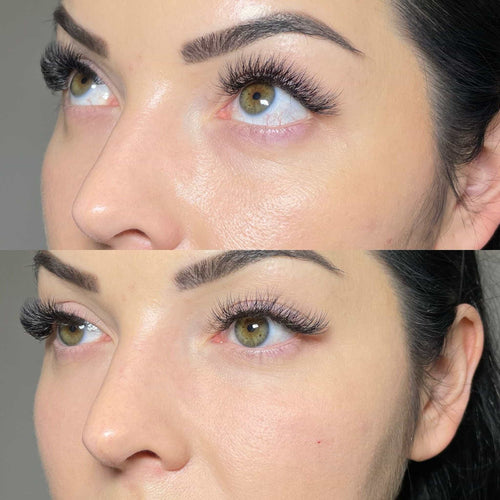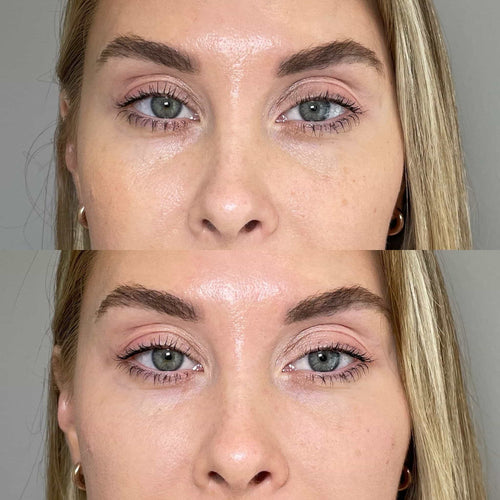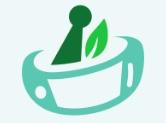Reserve a Dermal Filler Consultation with Dr. Laura Geige Now
Factors Influencing Swelling Duration
Filler Type
Swelling after lip fillers is a normal physiological response to the introduction of a foreign substance into the tissues.
Several factors influence the duration and severity of this swelling.
**Filler Type:**
Book a Dermal Filler Appointment at It’s Me and You Clinic with Dr. Laura Geige
Different types of dermal fillers have varying viscosities and compositions, which can impact swelling patterns. Hyaluronic acid (HA) based fillers tend to cause less pronounced swelling compared to calcium hydroxyapatite (CaHA) fillers.
HA fillers are generally more hydrophilic, meaning they attract water, leading to a temporary increase in volume but less significant swelling.
Conversely, CaHA fillers have a denser structure, potentially triggering a stronger inflammatory response and more pronounced swelling.
**Injection Technique:**
The *depth* and *volume* of injections directly influence swelling. Deeper injections generally result in more extensive tissue disruption and thus greater swelling.
Similarly, larger volumes injected will naturally cause a more significant fluid buildup.
**Individual Factors:**
Genetic predisposition, skin type, and overall health can all play a role. Individuals with sensitive skin or a history of allergies might experience prolonged or more severe swelling.
Metabolic rate also influences how quickly the body processes and absorbs substances like fillers.
**Other Factors:**
* **Sun Exposure:** UV rays can exacerbate inflammation, potentially extending swelling duration.
* **Smoking:** Nicotine constricts blood vessels, hindering lymphatic drainage, which can contribute to prolonged swelling.

* **Alcohol Consumption:** Alcohol can dilate blood vessels and interfere with healing, potentially delaying the resolution of swelling.
While swelling is typically temporary, it’s crucial to follow your injector’s post-treatment instructions carefully.
This often includes avoiding strenuous activity, applying ice packs, and staying hydrated to promote optimal healing and minimize complications.
Injection Technique
Several factors influence how long swelling lasts after lip filler injections.
The type and amount of filler used play a significant role. Hyaluronic acid fillers, which are water-based and readily absorbed by the body, typically cause less and shorter-lasting swelling compared to permanent or semi-permanent fillers.
Individual variations in metabolism and healing rate also contribute to swelling duration. Some people naturally experience more inflammation than others, and it may take longer for their bodies to process the filler and reduce swelling.
Injection technique can significantly impact swelling. A skilled injector who uses precise placement and avoids unnecessary trauma to surrounding tissues will generally minimize swelling.
Bruising, which often accompanies lip filler injections, can contribute to the overall appearance of swelling.
Other factors include individual sensitivity, pre-existing medical conditions, medications (such as blood thinners), and sun exposure. Sun exposure after treatment can increase inflammation and prolong swelling.

Following post-injection instructions carefully, such as avoiding strenuous activity, heat, alcohol, and smoking, can help reduce swelling and promote proper healing.
While initial swelling usually subsides within a few days, it may take up to two weeks for the final results to appear.
Individual Healing Rate
Swelling after lip filler treatment is a normal part of the healing process, but the duration can vary significantly from person to person. Several factors influence how long swelling lasts and how quickly an individual heals.
The amount of filler injected plays a significant role. Larger injections naturally lead to more pronounced swelling that takes longer to subside.
The type of filler used also matters. Certain fillers, particularly hyaluronic acid-based ones, are known to cause less swelling compared to other types.
Individual differences in healing rate contribute greatly to the swelling duration. Some people heal quickly, while others may take a bit longer. Factors like age, overall health, and genetics can all influence healing speed.
Lifestyle factors also have an impact. Smoking, alcohol consumption, and lack of sleep can hinder the healing process and prolong swelling.
Following post-treatment instructions carefully is crucial for minimizing swelling. This includes avoiding strenuous activity, applying ice packs, and elevating the treated area.
The technique used by the injector can also affect swelling. Experienced injectors often use techniques that minimize trauma to the tissue, leading to less swelling and bruising.
Pre-existing medical conditions like diabetes or autoimmune disorders may slow down healing and potentially increase swelling duration.
Lastly, individual sensitivity to the filler material can lead to different responses, including variations in swelling.
It’s important to remember that swelling typically peaks within 24-72 hours after lip filler treatment and gradually subsides over the following days or weeks.
Expected Swelling Timeline
Initial 24-72 Hours
Immediately following lip filler injections, you can expect some swelling that typically peaks within 24 to 72 hours.
During these initial hours, your lips may appear significantly larger and plumper than desired. This is a normal response to the injection process as your body begins to react to the hyaluronic acid filler.
The degree of swelling varies depending on several factors including the amount of filler injected, your individual metabolism, and how sensitive your skin is.
Some individuals may experience more noticeable swelling than others, but it’s important to remember that this is temporary.
Days 3-7: Gradual Reduction
Days 3-7 post-lip filler treatment typically mark a period of gradual reduction in swelling.
Here’s what you can expect:
-
Most of the initial, pronounced swelling subsides during this timeframe.
-
Lips may still appear slightly puffy, but the noticeable “balloon” effect should diminish considerably.
-
You may notice that your lips are starting to regain their natural shape and definition.
Factors influencing swelling reduction during days 3-7 include:
Reserve a Dermal Filler Session with Dr. Laura Geige Now
-
Amount of filler injected:
-
Individual healing rate:
-
Placement of the filler:
Following proper post-procedure care instructions from your practitioner is crucial for optimal swelling reduction and a smooth recovery.
Week 2: Minimal Residual Swelling
Week 2 marks a significant point in the lip filler swelling timeline as most of the initial puffiness subsides.
By this stage, you’ll likely notice minimal residual swelling.
The majority of the noticeable inflammation has generally disappeared, revealing a clearer picture of your final results.
Here’s a more detailed breakdown:
- Appearance: Your lips will appear closer to their natural shape and size with only slight areas of puffiness remaining.
- Tenderness: Any tenderness or soreness should have significantly reduced. You may still feel some mild sensitivity around the injection sites, especially when pressing or touching your lips.
- Duration:** This stage typically lasts for a few days to a week.
It’s important to remember that swelling can vary significantly from person to person based on several factors like:
- Amount of filler injected
- Individual healing process
- Technique used by the injector
- Lifestyle and habits (e.g., smoking, alcohol consumption)
Following your injector’s aftercare instructions diligently can help minimize swelling and promote optimal healing.
Managing Post-Treatment Swelling
Cold Compresses
Post-treatment swelling after lip filler injections is a common and temporary side effect.
It typically peaks within 24 to 72 hours after the procedure and gradually subsides over the following days or weeks.
Managing this swelling can help you feel more comfortable and reduce any potential bruising.
One of the most effective methods for managing post-treatment swelling is applying cold compresses.
Cold compresses work by constricting blood vessels, which helps to reduce inflammation and swelling.
Here’s how to use cold compresses effectively:
1. Apply a cold compress for 15-20 minutes at a time, several times a day, especially in the initial hours after your treatment.
2. Use a reusable ice pack wrapped in a thin towel or a bag of frozen peas enclosed in a soft cloth to avoid direct contact with your skin.
3. Avoid rubbing or pressing too hard on the area when applying the cold compress.
4. Be sure to take breaks between applications to allow your skin to warm up slightly.
5. Listen to your body and stop if you feel any discomfort.
In addition to cold compresses, other measures that can help reduce swelling include:
– Elevating your head while sleeping
– Avoiding strenuous activity and excessive sun exposure
– Staying hydrated by drinking plenty of water
– Following any specific aftercare instructions provided by your injector.
It’s important to note that swelling times can vary depending on factors such as the amount of filler injected, individual healing rates, and other medical conditions.
If you have any concerns about excessive or prolonged swelling, consult with your injector promptly.
Oral Anti-Inflammatories
Post-treatment swelling after lip fillers is a common and typically temporary side effect. The duration of swelling can vary depending on several factors, including the amount of filler injected, individual healing rates, and the type of filler used.
Managing swelling effectively can enhance your comfort and minimize any noticeable bruising or inflammation. Here are some strategies for managing post-treatment swelling after lip fillers:
- Avoid strenuous activity and exercise: Intense physical activity can increase blood flow to the treated area, potentially prolonging swelling.
- Apply cold compresses: Applying a cold compress wrapped in a thin cloth to the affected area for 15-20 minutes at a time can help reduce inflammation. Repeat as needed throughout the first few days.
- Elevate your head: Sleeping with your head slightly elevated can promote drainage and minimize swelling.
- Stay hydrated: Drinking plenty of water helps flush out toxins and supports your body’s natural healing process.
- Avoid touching or rubbing the treated area: Excessive manipulation can irritate the area and potentially delay healing.
Oral anti-inflammatory medications, such as ibuprofen or naproxen, can be effective in reducing swelling. Consult with your doctor or a healthcare professional for guidance on appropriate dosage and usage.
It’s crucial to follow the instructions provided by your injector carefully and attend any scheduled follow-up appointments. They can monitor your progress, address any concerns, and provide personalized recommendations for managing post-treatment swelling.
Avoidance of Certain Activities
Managing post-treatment swelling after lip filler injections is crucial for a comfortable recovery and optimal results.
Here are some tips on how to manage swelling:
-
Apply ice packs: Apply an ice pack wrapped in a thin towel to the treated area for 15-20 minutes at a time, several times a day. This can help constrict blood vessels and reduce inflammation.
-
Elevate your head: Sleeping with your head slightly elevated can help minimize swelling by promoting drainage.
-
Stay hydrated: Drinking plenty of water can flush out toxins and aid in the healing process.
-
Avoid hot showers or baths: Hot water can dilate blood vessels, increasing inflammation.
-
Skip strenuous activities: Intense exercise can elevate your heart rate and blood pressure, potentially worsening swelling.
-
Limit alcohol consumption: Alcohol can dehydrate you and interfere with healing.
It’s essential to avoid certain activities in the days following lip filler treatment to prevent complications and ensure proper healing:
-
Avoid touching or rubbing your lips: This can introduce bacteria and disrupt the healing process.
-
Refrain from makeup application on the treated area for at least 24 hours.
-
Stay away from activities that involve a lot of facial movement, such as laughing excessively or kissing, as these can cause pressure and bruising.
Following these tips can help you manage swelling effectively and achieve the best possible results with your lip filler treatment. Remember to consult with your injector if you experience excessive swelling, pain, or any other concerns.
Your Relationship Edge The CBD Consultancy My Better Love On the Carpet Electric Youth Magazine Azmia Magane
